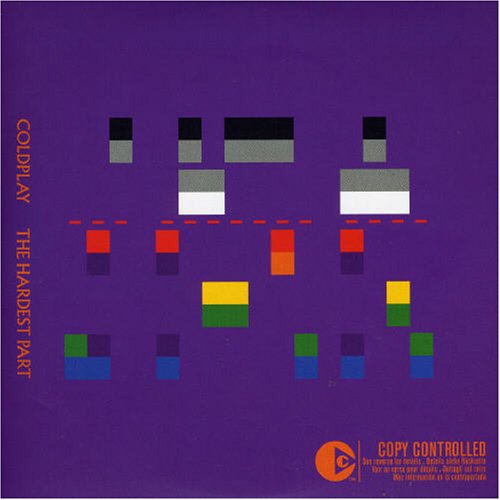 The Fourth Single from the Group's Multi-platinum No. One Album "x and Y" Includes the Title Track Produced by Tom Lord-alge and a Live Version of "How You See the World" Recorded at London's Earl's Court.
The Fourth Single from the Group's Multi-platinum No. One Album "x and Y" Includes the Title Track Produced by Tom Lord-alge and a Live Version of "How You See the World" Recorded at London's Earl's Court.“That’s a fine lookin’ fiddle ya got there, kid.”
I gritted my teeth into a forced smile and quietly thanked the old man at the bus stop. “Fiddle!?” I thought, gritting my teeth into a polite smile. “It’s a V-I-O-L-I-N, you old goat!”
Teenagers are sensitive and easily embarrassed, but this chickie had a bit too much pride in self-labeled “superiority as a classical musician,” which meant I was annoyingly arrogant and a general pain in the butt.
Humbled by merciless teasing in jazz college opened my eyes to the music outside my sanctioned little bubble.
I learned to fiddle.
For the most part “fiddle” is a style of music, such as Celtic, Bluegrass or Old Time. Nevertheless, there are a few differences and stereotypes between fiddle and violin.
We’ve all threatened Fluffy that she’ll be taking a trip to the string factory if she doesn’t stop scratching the couch. There’s the violin’s dark secret of winding silver around a stretched piece of animal tissue (run Fluffy, run!). This used to be the principal method of making violin strings.
Gut strings possessed a rich and full quality ideal for orchestral playing. They weren’t perfect for the bank account, however, and fiddlers resorted to the cheaper alternative: steel. Steel strings have a “bright” timbre (tone) and carry well in a solo situation.
Steel strings are very difficult to tune with the violin’s clumsy wooden pegs. Many steel strings were broken until the glorious invention of fine-tuners, the tiny little metal mechanisms on the tailpiece that makes tuning a piece of cake. Violinists adopted this technology for use on their steel “E” strings which is nearly impossible to tune with the peg.
When I was youth symphony many players removed their lower string fine tuners haughtily, like a child insisting training wheels are for babies. The use of fine tuners on all four strings unfortunately had become associated with less skilled musicians since fiddlers used them. There is also evidence that fine tuners alter the quality of harmonics (higher frequencies). This a ridiculous stereotype was invented: violinists use the pegs, fiddlers use fine tuners.
It is thought that fiddles are simply cheap violins. At one time this could have been true, as poorer or rural folks usually played home-made fiddles, not Strads. They were less likely to afford private lessons or attend the symphony, but learned traditional tunes at jams and ceilidhs (kay-lees). Since many fiddlers never had formal lessons, most couldn’t read music and played everything by ear, whereas violinists could read music usually could not improvise. Another stereotype was invented.
Holding a violin with one’s jaw makes it nearly impossible to talk and play simultaneously (similar to walking around with your pants around your ankles). Square dancing fiddlers dealt with this difficulty by holding the violin down on their arm rather than under the chin, freeing up their jaws to “call” the dance moves. This technique is a big no-no in classical playing and it created yet another rift between violin and fiddle.
Luckily it seems the violin/fiddle gap has narrowed considerably in the past few years. Most players use new hybrid strings that posses a full and rich, yet clear, tone and respond well to both classical and fiddle playing. Classical violinists aren’t so sticky about fine tuners anymore as they are seen as an advantage over using stubborn old pegs.
The resurgence of fiddle music in pop culture has created an opportunity for fiddlers to aspire to a higher level of playing ability and for violin students to branch out and try other genres of music. Hence fiddlers and violinists alike have finer instruments and a formal music education.
Fiddle technique is being abandoned by many fiddlers who have discovered the benefits, such as greater speed and fewer backaches, of the classical technique. New programs in music education in new programs has produced fiddlers who can read music and violinists who can improvise.
As more musicians branch out musically and develop new ways of playing there will be little difference between "violin” and “fiddle.” Musicians will feel much more comfortable playing with each other and the stereotypes will fade away, both violin and fiddle will be valid.
You’ll see the old man at the bus stop whistling to “Celtic Swing Baroque Techno” on his MP3 player.
**Rhiannon Schmitt (nee Nachbaur) is a professional violinist and music teacher who has enjoyed creative writing for years. She writes for two Canadian publications and Australia's "Music Teacher Magazine."
Her business, Fiddleheads Violin School & Shop, has won several distinguished young entrepreneur business awards and offers beginner to professional level instruments, accessories and supplies for very reasonable prices: Visit http://www.fiddleheads.ca
irish dance music
No comments:
Post a Comment